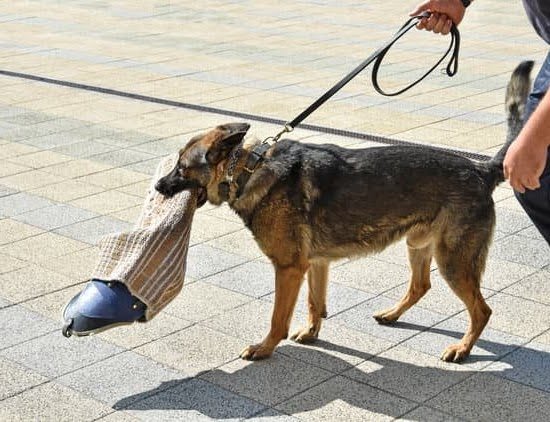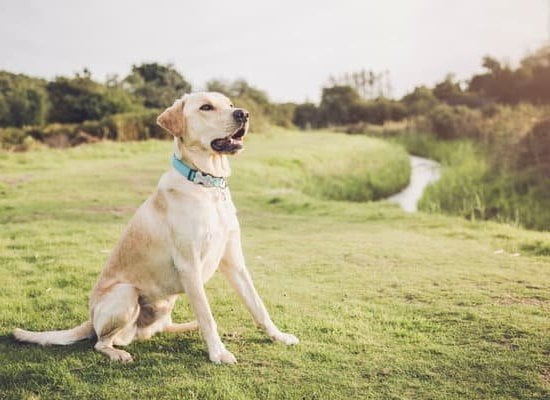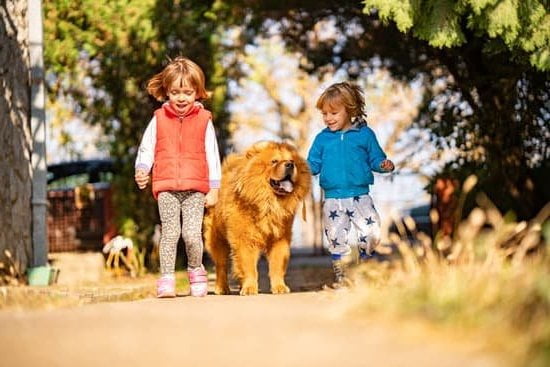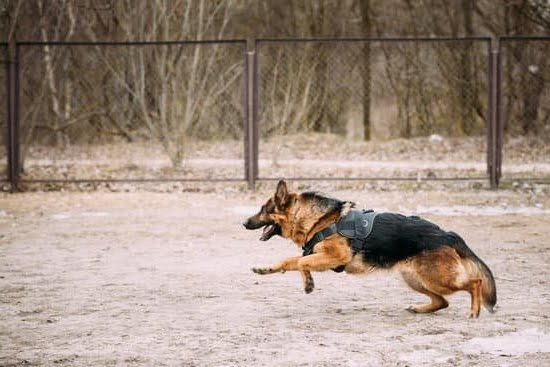Introduction
Training your dog to walk on a leash is an essential part of their lifelong education. It helps create a strong bond between you and your pup, and allows for safe outings in public areas such as parks and sidewalks. Before beginning leash training at home, it’s important to think about the equipment you might need, such as the right size collar or harness for your pup, as well as the level of treat rewards you can use during training. Additionally, being consistent with commands and enforcing them in a firm but gentle manner is key to successful training sessions.
The first step to successfully starting leash training is acclimating your dog to their collar or harness. Put the innovative tool around their neck and let them get used to having it on their body before ever attempting to walk them with it. You can do this by spending some quality time together with the accessory so they learn how comfortable it is. Talk calmly and softly, rub their fur while they wear it or offer some treats to get them adjusted easily and happily.
Once your pup has gotten used to wearing the collar/harness combination, it’s time to teach them the basics of walking on a leash using verbal commands such as “heel” or “come here!” Begin inside and in an area without much passing foot traffic if possible; introduce heel commandverbally and follow up with a physical directive behind that movement— gently tugging on the leash in the direction you’d like him/her to move helps reinforce proper behavior when teamed up with positive reinforcement (e.g., treats).
Once inside training proficiency is established, gradually introduce outdoor outings for short periods at first; usually no more than 10 minutes per outing for beginner dogs until they respond consistently— allowing access only when commanded heel. Make sure that no more than two people attend any given outdoor learning session: one dedicated teacher (you) plus another person who will support from afar— ideally someone else who can continually feed treats simultaneously reinforcing good habits among other distractions present outdoors (e.g., other leashed dogs). As your pup rapidly advances through successive cycles of guided walks and structured play breaks outside; practice indoors will help ensure consistency when transitioning back within four walls confirming mastery of this vital life skill!
Sizing and Acquiring the Right Leash and Harness
Before you start training your dog to walk on the leash, it is important that you have the right-sized harness and leash. It is vital to have a comfortable fit for both the dog and yourself and make sure that neither is too tight or too loose. An adjustable harness will help ensure a snug fit as your dog grows. When selecting a leash, ensure that it has appropriate handle length, material and stiffness for your own comfort. A three foot leash made from quality materials can provide sufficient control for most breeds of dogs, however larger breeds may require longer leashes for control. There are also retractable leashes available which allow owners more control depending on the situation and environment. Additionally, consider adding some reflective elements to both the collar/harness and leash so your pup stays visible in low light environments like when walking at night.
Establishing a Training Routine and Rewards System
An important part of teaching your dog to walk on a leash is establishing a training routine and rewards system. Begin by giving your dog an appropriate amount of time to become used to the leash. Letting your dog drag the leash around for a few days will help him become more comfortable wearing it. As you progress with the training, reward your pup each time he takes a step in the correct direction, either with treats or simply verbal praise. If he pulls during a walk, stop immediately and wait until he faces you again before continuing. This teaches them that they need to stay focused while walking. Gradually increase the distance and duration as your pet becomes more reliable at following commands while walking on their leash.
Using positive reinforcement when your pup displays good behavior is key in training them to walk on a leash without pulling. Set up regular treat and play-based reward sessions, such as playing fetch or giving them tasty treats, where they can reach these rewards if they follow specific commands correctly while walking on the leash. When taking your pup out for walks encourage calm behavior using phrases such as “heel” or “walk nicely” so that they learn these terms associated with walking calmly on their leash. Additionally, consider getting other people involved in teaching your dog how to walk well on their leash – having unfamiliar people take him for short walks will help shape his behavior when being taken out for walks in public places!
Understanding How Dogs Learn and Respond to Commands
One of the most important commands to teach a dog is how to walk on a leash. This skill not only helps keep your dog safe, but also gives him exercise and an opportunity to socialize. It’s best to start training your pup when he’s young so that the process is less time-consuming and easier. To help train your pup in a successful manner, it’s important to understand how dogs learn and respond to commands.
Positive reinforcement, like giving constructive praise for good behavior or rewarding with treats, is one of the most effective ways of teaching a dog any new skill or command. Positive reinforcement focuses on rewarding desired behaviors which encourages the animal to repeat them, while also forming an emotional bond between you and your pup. Every time you apply positive reinforcement after a successful attempt at following a command or behaving in a certain way, you strengthen that bond further. Examples of positive reinforcements could include verbal praise by using pet names or phrases like “good boy/girl” along with treats, physical affection (petting), playtime etc.
Aside from positive reinforcement when it comes to teaching your dog how to walk on leash properly, repetition plays an equally important role in order for them to adequately learn the skill. Expecting too much from your pup in the early stages can be overwhelming for them; start off small with short sessions and progressions over several days until they have grasped the concept fully. Try leading your pup around areas he’s most familiar with first— let him get comfortable with following you around as you reward him for extended periods of walking without pulling. Typically stay close enough to encourage him but far enough so that he doesn’t feel threatened by you; allowing him time away at his own pace will make their experience more enjoyable while gradually increasing their comfort zone makes achieving results much simpler!
Practicing the Basics of Walking on a Leash
Once you have the right equipment, you can start teaching your dog to walk on a leash. Begin by having your dog in the desired position (by your side), and then start walking with short steps, keeping the tension in the leash slightly loose. The goal is to get your dog accustomed to you moving forward while they stay relatively calm at your side. To achieve this, it’s important that you provide plenty of rewards (e.g., treats or verbal praise) every time they succeed in matching pace with you.
To take things up a notch, grab a few more treats and head for either a quiet area outside or an open-plan indoor space such as a hallway or large room without furniture. Overlay a slight amount of tension onto the leash when walking and ask your pup to maintain their position by giving them occasional verbal commands like “left” or “right” or simply “with me” if they are falling behind or running ahead. Give them small treats as rewards when they meet their expectation, but don’t forget to give them praise during and after each training session too! Gradually increase the distance and length of each session, allowing yourself reasonable breaks in between. After doing this several times over, eventually you should be able to walk at normal speed with your pup calmly following right next to you!
Reinforcing Positive Behavior and Rewards
When training a dog to walk on a leash it is important to remember to reinforce positive behavior and to reward your pup. Any progress made should be applauded and the pup should be given plenty of treats and love. This will ensure that the pup continues to make progress and remain engaged in the training process. Generally, it is good practice to start slowly with leash-training. Begin by fitting the dog with a comfortable, properly-sized collar and leash and then go for short, slow walks around familiar places. As the pup becomes more accustomed to walking on a leash, gradually increase the pace on each walk until the pup feels comfortable walking at a steady pace. Remember that when teaching a new behavior such as leash walking, it is important to set small goals and incrementally build from there. Making sure your pup gets lots of positive reinforcement when they exhibit desirable behaviors is key for successful leashing training.
Overcoming Setbacks and Troubleshooting Problems
One of the most important steps in teaching a dog to walk on leash is to be prepared for any potential setbacks and troubleshooting problems that may arise. It’s important to remember that even if you’re experienced in training dogs, each pooch is different and may learn differently from other dogs. As such, it’s essential to make sure you’re ready for anything that might come up throughout the training process.
In order to troubleshoot effectively, be mindful of your dog’s behaviors, body language, and environment when walking on a leash. If your pup is not accustomed to being leashed, start off with shorter walks and gradually increase distance over time to ensure your dog is comfortable with the process. Additionally, keep watch for signs of anxiety or fear alluding them when outside; if this occurs try creating positive reinforcement tools like verbal praise or treats to provide an incentive for good behavior. Similarly, provide vocal cues whenever needed as these can serve as helpful guides as they become more comfortable while on leashes. With consistent patience and motivation, your pup can soon be walking happily on their leash with little effort!
Conclusion
When your pup has mastered walking on a leash, you can both reap the benefits! Your walks will be more enjoyable, as you and your pup have the opportunity to interact with each other and with your environment. Whether it’s taking a leisurely stroll around the neighborhood or an adventure to a nearby trail, you can appreciate the calm, relaxed demeanor of your pup while keeping yourself safe. Plus, properly trained dogs may have the chance to socialize with other furry friends and their owners during walks – leading to even more memorable experiences for everyone. Training may be difficult at first, but do not get discouraged; with patience, consistency, delicious rewards and lots of positive reinforcement, it won’t be long before you see big results from your pup. You can enjoy every moment out together once that leash is properly taught!

Welcome to the blog! I am a professional dog trainer and have been working with dogs for many years. In this blog, I will be discussing various topics related to dog training, including tips, tricks, and advice. I hope you find this information helpful and informative. Thanks for reading!





